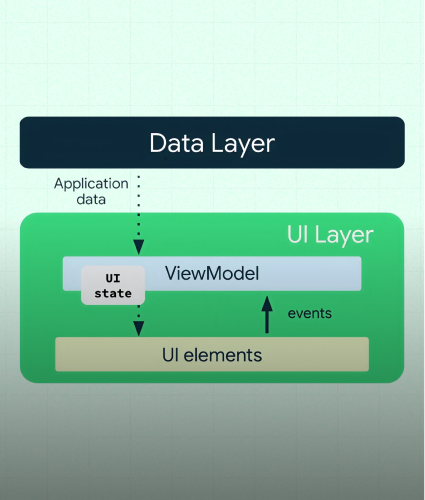The mobile development landscape has evolved rapidly, with hybrid app development becoming a transformative solution for businesses prioritizing speed, scalability, and cross-platform reach. In 2025, hybrid frameworks have matured into powerful tools that enable developers to build applications that perform seamlessly across Android, iOS, Web, Windows, macOS, and Linux using a single codebase.
As companies strive to expand their user base without inflating costs, hybrid approaches like Progressive Web Apps (PWA) and modern cross-platform frameworks are bridging the gap between native performance and web accessibility. These tools now rival native apps in both user experience and technical capability.
The hybrid development ecosystem, led by frameworks such as Flutter, React Native, and Kotlin Multiplatform, is thriving. Enhanced tooling, active communities, and growing enterprise adoption are pushing the boundaries of what is possible with shared code. For both startups and established enterprises, hybrid solutions offer unmatched efficiency, faster time-to-market, and wider platform coverage, all of which are critical in today’s competitive market.
Understanding Hybrid App Development
Hybrid app development is a modern approach that allows developers to create mobile applications using a single codebase that runs across multiple platforms, including Android, iOS, web browsers, macOS, Windows, and Linux. It blends the flexibility of cross-platform development with the performance and capabilities traditionally associated with native applications.
Modern hybrid frameworks like Flutter, React Native, and Kotlin Multiplatform have redefined what’s possible with shared code. These frameworks enable developers to build high-performance apps with native-like user experiences and deep integration with device hardware and platform-specific APIs.
This development strategy significantly reduces both time and cost by allowing teams to write code once and deploy it everywhere. It also simplifies updates and maintenance, since changes need to be made only in one place. With increasingly mature tooling and strong community support, hybrid development now competes closely with fully native approaches.
Leading Hybrid App Development Frameworks in 2025
The hybrid app development ecosystem offers a wide array of frameworks tailored to diverse development needs and preferences. While we’ll explore the top three frameworks in detail-Flutter, React Native, and Kotlin Multiplatform (KMP) other notable options include Ionic, Xamarin, Apache Cordova (and its discontinued sibling PhoneGap), NativeScript, Quasar, Framework7, and Capacitor.
Flutter
Google's Flutter has emerged as the leading hybrid app development framework in 2025, gaining significant market share and developer adoption. Flutter's unique approach uses the Dart programming language and renders directly to the platform’s canvas, bypassing the need for platform-specific UI components while supporting Android, iOS, web, Windows, macOS, and Linux from a single codebase.
Flutter's widget-based architecture and hot reload feature have made it extremely popular among developers seeking rapid development cycles and consistent UI across all platforms. The framework's performance closely matches native applications, making it an attractive option for complex, graphics-intensive apps that need to run seamlessly across mobile and desktop environments.
In cases where platform-specific functionality is required, Flutter allows seamless integration with native code using platform channels. Developers can write native Swift, Objective-C, Kotlin, or Java code and invoke it directly from Dart, enabling access to device-level features like camera, sensors, and Bluetooth. This capability makes Flutter highly flexible, combining the productivity of cross-platform development with the power of native features when needed.
React Native
React Native continues to dominate the hybrid app development landscape in 2025, maintaining its position as one of the most popular frameworks among developers and enterprises. Developed by Facebook, React Native has matured significantly, offering improved performance, better debugging tools, and enhanced developer experience across Android, iOS, web, and desktop platforms, including Windows, macOS, and Linux.
The framework's architecture enables developers to write JavaScript code that renders native components, resulting in applications that feel and perform like native apps across all supported platforms. React Native's component-based architecture promotes code reusability and maintainability, making it an excellent choice for large-scale applications targeting multiple operating systems.
Kotlin Multiplatform (KMP)
Kotlin Multiplatform has emerged as a powerful contender in the hybrid app development space in 2025, offering a unique approach that combines the performance benefits of native development with the efficiency of shared code across Android, iOS, web, and desktop platforms, including Windows, macOS, and Linux. Developed by JetBrains, Kotlin Multiplatform allows developers to share business logic across platforms while maintaining platform-specific UI implementations.
Unlike traditional hybrid frameworks, Kotlin Multiplatform compiles to native code on each target platform, ensuring optimal performance while maximizing code reuse across all supported operating systems. This approach is particularly appealing to teams with existing Android development expertise who want to expand to iOS and desktop platforms without sacrificing performance.
KMP also integrates seamlessly with native codebases, Swift for iOS, and Kotlin/Java for Android, making it easy to incrementally adopt in existing projects. Its growing ecosystem, supported by JetBrains and the open-source community, includes multiplatform libraries for networking, serialization, coroutines, and more. As tooling and IDE support continue to mature, KMP is becoming a practical choice for companies looking to future-proof their codebase while delivering high-performance applications across a wide range of platforms.
Hybrid App Development Pros and Cons
Pros of Hybrid App Development
Cost Efficiency and Resource Optimization
Hybrid app development offers substantial cost savings by enabling a single codebase across platforms, reducing the need for separate development teams. From my experience, it can cut development costs by 30–50% compared to native approaches. Beyond initial savings, maintaining and updating apps is simpler and faster. Teams can roll out features and fixes simultaneously across iOS, Android, and web, ensuring consistency and reducing long-term development and maintenance efforts.
Faster Time-to-Market
Hybrid app development accelerates launch timelines by using a shared codebase to deploy across platforms simultaneously. In 2025’s fast-paced market, this speed is crucial—businesses that respond quickly to user needs and trends gain a competitive edge over those tied to slower native development cycles.
Cross-Platform Consistency
Hybrid development delivers a uniform user experience across mobile, web, and desktop platforms. Modern frameworks allow shared functionality with platform-specific adjustments, enabling apps to feel native while maintaining brand consistency. This is essential for businesses aiming for cohesive design and interactions across all user touchpoints.
Simplified Maintenance and Updates
Hybrid development streamlines maintenance by using a single codebase for all platforms. Bug fixes and feature updates can be deployed simultaneously, reducing effort and cost. This efficiency is especially valuable for businesses with limited resources or those managing apps across multiple operating systems.
Wide Developer Community
Flutter and React Native have large, active communities that offer extensive resources, open-source libraries, and support. This ecosystem speeds up development, simplifies bug resolution, and enables faster onboarding. Businesses benefit from easier talent acquisition and can leverage existing web development skills for cross-platform app projects.
Rapid Prototyping and MVP Development
The speed of hybrid development makes it ideal for creating prototypes and minimum viable products (MVPs). Startups and businesses can quickly test market hypotheses and gather user feedback before committing to full-scale development.
Cons of Hybrid App Development
Performance Limitations
Despite improvements, hybrid apps may still lag behind native apps in performance, especially for graphics-intensive tasks like gaming or real-time animations. Apps requiring heavy processing can struggle on older devices, making native development preferable for high-performance or resource-demanding applications.
Platform-Specific Feature Limitations
Hybrid apps may face delays in accessing new or advanced platform-specific features. While common APIs are supported, cutting-edge OS capabilities often require native development. This lag can limit innovation and delay the adoption of the latest functionalities compared to native apps.
User Experience Inconsistencies
Hybrid apps may struggle to fully match native design standards across platforms. While frameworks offer tools for adaptation, achieving pixel-perfect experiences often requires extra customization. Subtle UX differences can impact user satisfaction and potentially affect app store ratings, especially among users familiar with native interactions.
Dependency on Framework Evolution
Hybrid apps rely heavily on the ongoing support and updates of their frameworks. Changes in direction, deprecated features, or stalled development can disrupt maintenance and future planning. This dependency poses risks for long-term projects, requiring businesses to adapt to changes outside their direct control.
Debugging Complexity
Debugging hybrid applications can be more complex than native apps due to the additional abstraction layers. Issues may occur at the framework level, native bridge level, or platform-specific implementations, making troubleshooting more challenging.
Limited Access to Latest Platform Features
Hybrid apps often lag behind native apps in accessing the latest platform features and APIs. While frameworks work to bridge this gap, there's typically a delay between when new features become available natively and when they're supported in hybrid frameworks.
Real-World Hybrid App Development Use Cases
E-commerce Applications
E-commerce platforms are a strong use case for hybrid app development, enabling consistent shopping experiences across mobile, web, and desktop. Retailers like Shopify use hybrid frameworks to deliver feature-rich apps with unified product catalogs, carts, and checkouts. Integration with payment gateways and support for complex business logic make hybrid apps ideal for cost-effective, scalable e-commerce solutions that perform smoothly across multiple devices and user touchpoints.
Social Media and Communication Apps
Many popular social media and communication platforms utilize hybrid development approaches to maintain feature parity across platforms while enabling rapid feature deployment. The shared codebase allows for the simultaneous rollout of new features and consistent user experiences.
Business and Productivity Applications
Hybrid app development is ideal for business and productivity tools, offering consistent performance across mobile, web, and desktop platforms. Enterprises benefit from seamless integration with internal systems and faster deployment across devices. Startups also favor hybrid frameworks to launch feature-rich apps quickly across multiple platforms. In many cases, hybrid solutions win over native approaches for business apps due to their cross-platform consistency, cost-effectiveness, and the ability to maintain a unified user experience across smartphones and desktop environments.
Personal Experience and Industry Observations
When I started working in mobile development, hybrid apps were seen as a second-choice option. But now, they’ve improved so much that they’ve become a popular and reliable way to build apps. By 2025, frameworks will have matured enough that users often can't distinguish hybrid from native apps.
Successful projects typically involve choosing the right framework, clear goals, and skilled cross-platform teams. Many companies are now shifting from native to hybrid to boost efficiency and reduce maintenance costs, showing growing trust in hybrid technologies for delivering robust, production-ready applications.
Future Trends and Predictions
Hybrid app development in 2025 is closing the gap with native performance. Developers are embracing micro-frontend architecture and modular design systems to build scalable, maintainable apps with faster release cycles. AI-assisted development tools are streamlining code generation, UI creation, and testing by integrating directly into IDEs and CI/CD pipelines, boosting overall productivity.
WebAssembly (WASM) is becoming a game-changer, enabling hybrid apps to handle demanding tasks like AR rendering and video processing efficiently. With growing support for foldables, wearables, and desktops, hybrid apps are becoming more adaptive. Security is also advancing with zero-trust models, offline-first strategies, and robust plugin ecosystems.
Summary
Hybrid app development has emerged as a powerful and cost-effective approach for building applications that work seamlessly across platforms, including Android, iOS, Web, and Desktop, using a single codebase. In 2025, frameworks such as Flutter, React Native, and Kotlin Multiplatform have evolved to deliver near-native performance, refined UI/UX, and robust plugin support. This approach significantly reduces development time and costs, making it ideal for startups and businesses aiming for faster go-to-market.
While hybrid apps may face limitations in performance-heavy use cases or complex native integrations, they are well-suited for most business, utility, and consumer applications. With consistent improvements in tooling, growing developer communities, and expanding enterprise adoption, hybrid development offers unmatched scalability, easier maintenance, and a strategic edge in today’s fast-paced mobile-first ecosystem.
Looking to build a high-performance hybrid app for your business? Contact us today to turn your idea into a powerful cross-platform solution that scales.




.svg)

.svg)



.svg)

.svg)

.png)
.png)





.png)
.png)
.png)
.png)
.png)
.png)






